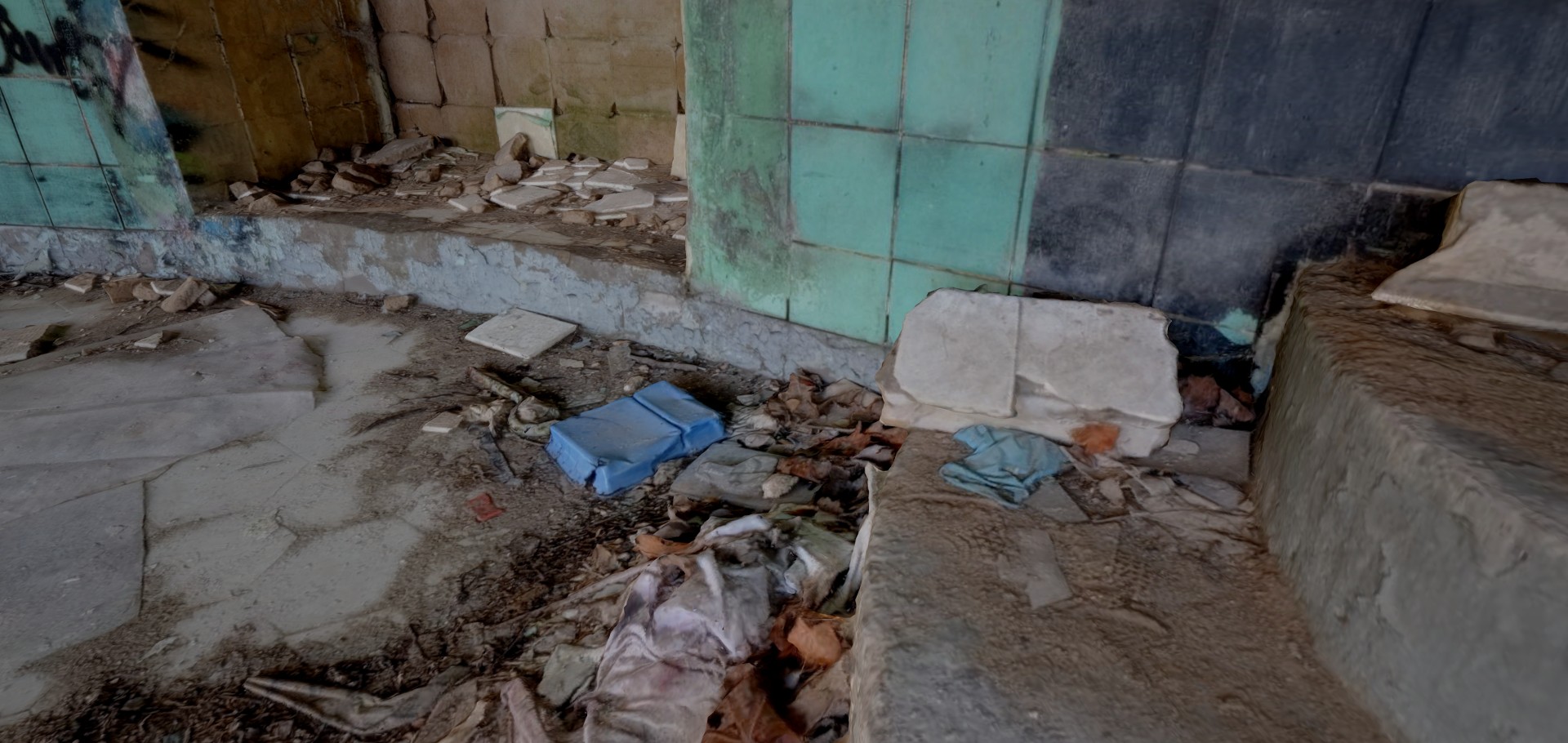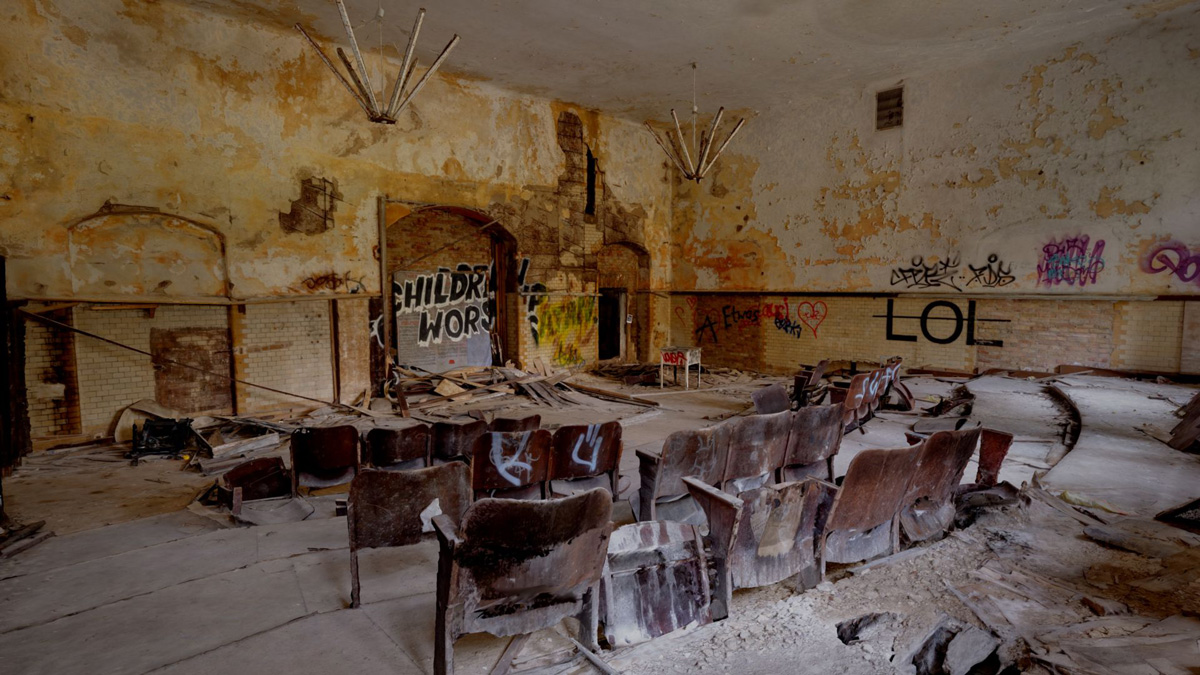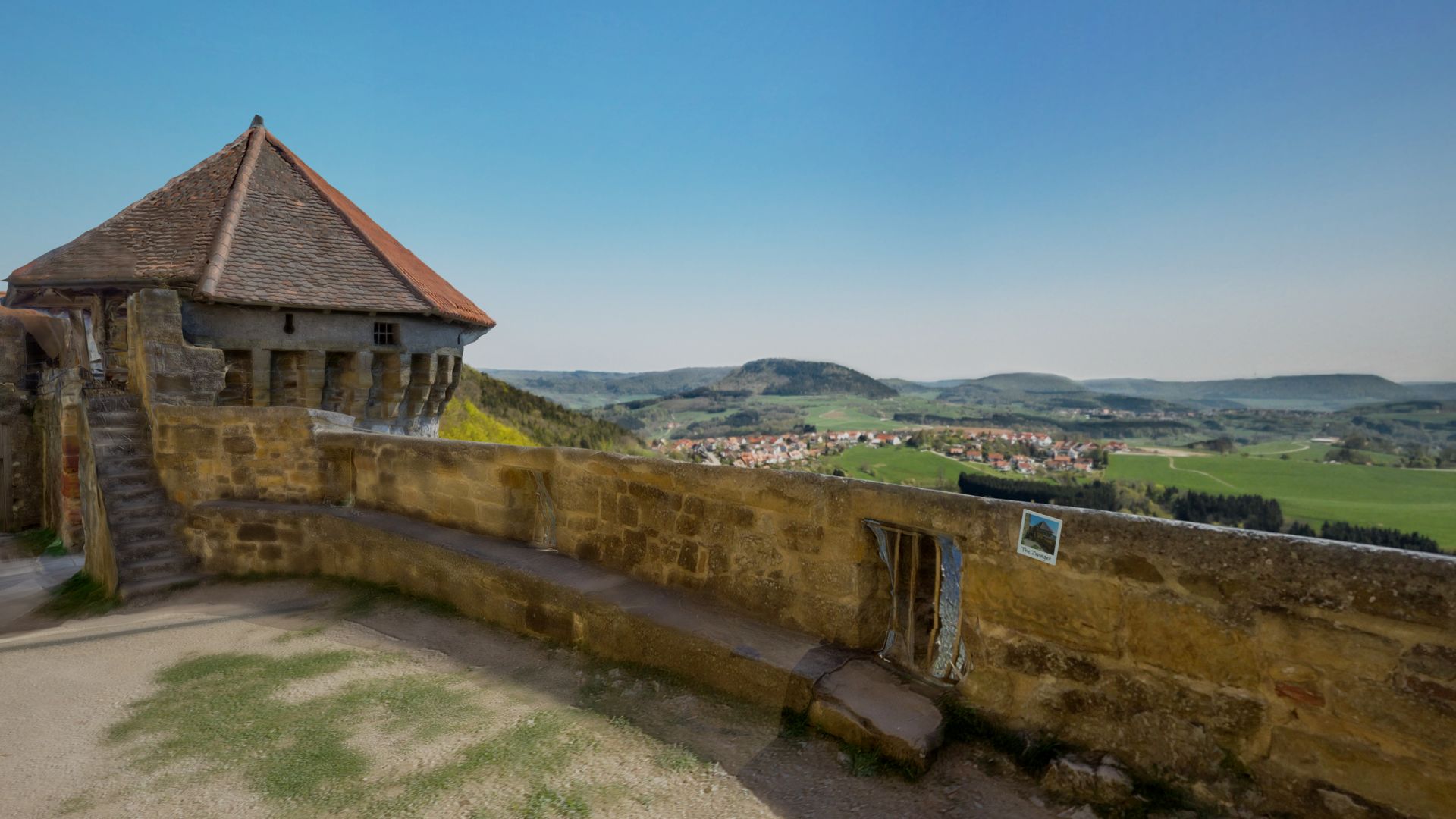I’m down on my hands and knees on the floor of an abandoned hospital somewhere in Germany. The place is filthy with crushed cans tossed around the room and into corners, surgical gloves haphazardly dropped on the ground, and graffiti covering the walls. It’s the kind of place that if the sun went down, you would start instinctively checking over your shoulder for the serial killer sneaking up behind you, but by day there is a charming intriguing quality to the space that beckons me to explore more.
I move over toward a pile of trash next to the entrance of the room, bending down to examine a busted TV amongst the clutter. Wires and the intricacies of its remaining inner workings exposed, I spend a while sticking my head inside and looking around.
Now, before you get the impression that I am some trash loving troll, I am not actually in an abandoned hospital, despite what my eyes are telling me. I’m on the floor in my apartment in San Francisco getting a glimpse into the future of virtual tourism.
“Look over to your right,” says Realities.io CEO Dominic Eskofier from behind me. As I do my eyes grow wide.
On the stairs next to me is a footprint, its depth and detail feel convincingly real to the point that I felt myself hold my breath so as not to disturb the dust.
“When I saw that,” he says, “I knew we had something.”
What he had was one of the best examples of photogrammetry I have ever seen.

Eskofier started Realities.io together with photogrammetry expert David Finsterwalder, award-winning UX designer Daniel Sproll and a mission to transport people to places they have never been, and could potentially never visit, in virtual reality.
“Virtual tourism is one of the things that inspired me most about virtual reality,” he said. “We want to take people into the tombs of the Pyramids, the abandoned buildings in Chernobyl, into all the places they have imagined but never had the chance to visit.”
Exploring the various environments in the aptly called Realities platform, coming soon to Steam, I found myself exploring details that I would never have paid attention to in real life. There is something about the medium that turns mundanity into spontaneity – crushed can on the ground and a broken TV
“There is just something about VR that makes junk even more compelling,” says Eskofier, “it’s about discovery.”
As with any sort of touring, one of the goals is to educate you about the place you are visiting. As you move through the space with a locomotion technique that feels like a cross between Cloudhead’s Blink mechanic and Google Street View’s warp there are photographs and audio tour buttons throughout the environment. If you grab one of the photos and flip it over, you can learn some fun facts about the space you are in.
The technique that Realities.io is using to capture environments is far from new, but their implementation of it is incredibly refined. In concept, photogrammetry actually dates back as far as the 1400’s when Leonardo di Vinci worked out the process of perspective and projective geometry. The process works by compiling a number of different images taken at various angles, and calculating measurements in the geometry based on differences between them.
In order to capture these scenes, the team took a series of images of the space in a way to maximize parallax inbetween pictures and then uses those images to calculate the distance between points and create depth. For more complex shapes and details, like chairs and the TV, the team takes shots from multiple angles around its depth.
The whole capture process, Eskofier says, takes about two hours. Then those images are fed into Realities.io’s custom algorithm where they are processed. All in all, the process takes a couple days for a single scene but the result, when done correctly, is the amazingly photorealistic scene that I experienced.
Eskofier says the team sees many potential uses beyond tourism for their technology including building game environments and assets, The Vanishing of Ethan Carter, for example, was created using a similar technique, bur for now the team will be focusing on the virtual tourism aspect.
“We are excited for the possibilities that this technology enables for VR,” says Eskofier.

Virtual reality allows you to explore places that we would perhaps not rather go in person, like an abandoned hospital, and scrutinize the smallest details without worrying about getting pricked by the hypodermic needle in the haystack. When you remove yourself from your natural protective instincts that prevent you from getting down amongst the trash, you open yourself up to seeing things through a new lens. Suddenly the mundane becomes infinitely interesting and before you know it you have spent five minutes staring up at the amazingly detailed paint chipping off the walls.
Through the Realities platform, you don’t just explore places you’ve never been before, you see them in an entirely new perspective – and that is pretty powerful.



























